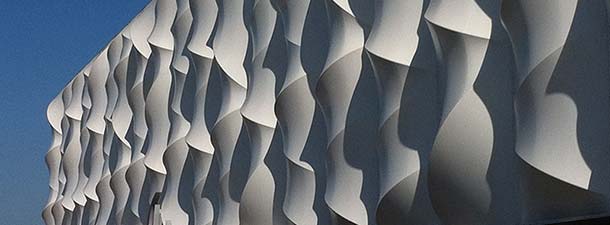
The Most Unpleasant Person You’ll Ever Meet: The Corporation
Agosto 1, 2013
Arica – Life on the Edge
Agosto 1, 2013The careering juggernaut of technology since the start of the Industrial Revolution has led us in the pursuit of the ever-new, ever-novel, and innovative. This has its merits one supposes, but it also burns up finite resources at a ferocious – and unsustainable – rate. In terms of design, looking back at the collective knowledge and history of humanity can bring solutions and sustainability to contemporary life.
Without being a historicist about it, there is something in the way man has used natural materials for building across time, which we could do well to take into consideration as we move into the third millennium of the Common Era.
With the planet’s ever-increasing population, the demand for finite resources intensifies and time is running out. We cannot create more choice simply by replicating our original organic materials. We have to work out how to adapt their inherent properties to suit contemporary living.
Intelligent materials have always been developed in this way; it is just that nowadays technology enables us to be more efficient, allowing humanity to extract more from a single strand or cell. By combining these particular tissues with others that share a common function, we can build stronger, more resilient materials, adapted for the demands of twenty-first century living.
When talking about natural materials, we tend to think mostly of plants. However, animal derivatives can also offer some equally useful choices for architecture and design. Skins, wool and fur have long been used as protective coverings and decorative items. In a recent exhibition in London, the Campaign for Wool staged its own attempt to broaden our horizons surrounding this most natural of materials. Given the long history of its use by humans, the nature and performance of wool has already been tried and tested. So what could be left to prove?
Yet it is precisely because of its inherent hardwearing, fire-resistant, insulating and anti-static properties that designers choose to work with wool, thereby emphasising its structural capabilities. Through demonstrating how interventions can be made to improve not only the environmental, but also the social qualities, we see wool not merely as a luxurious carpet or overcoat, but as an essential resource we can learn from.
We must be certain, however, of using materials in the best possible way, ensuring we engage with both the technical understanding and design invention. Only by being fully conversant with the material itself, will we be able to reduce the amount used or discover capabilities suitable for alternative applications. With so many of the world’s finite resources running out, connections need to be discovered now. Specialist foundations and organisations such as the UK Green Building Council and the Building Research Establishment have been set up specifically to discover those connections and further the developments in high-performance material technology. There is also a certain amount of ‘greenwash’ that needs to be disputed before credence is given to every claim made by manufacturers and suppliers. What might be marketed as a ‘green alternative’, may in fact be exactly the opposite. Consumers need to be given – or be empowered to find out for themselves – all the details about a product, including growth methods, harvesting, transportation and potential disposal so that an informed buying decision can be made. In the UK, a scheme commonly known by the acronym WRAP (Waste and Resource Action Programme) was set up in 2000 with the simple idea of encouraging better design through informed consumption. WRAP have recently begun to develop a publicly accessible database, which – when ready – will provide data on the embodied carbon of buildings. This will give architects, designers and construction professionals an understanding of the typical embodied carbon performance levels for different building types. They would then be able to weigh the environmental cost of using particular materials across the life cycle of the building against the possible alternative re-use or reclamation of other materials.
This is something that surface consultants Material Council believe in strongly, stating during an interview in February 2013, that ‘There’s no such thing as a sustainable material, just what’s most appropriate for the context…’. There may be instances when sourcing local virgin material is more environmentally sound than transporting a reclaimed variety from further afield.
This is where the knowledge and understanding gained through hundreds of years of material use has its advantage. An example of this is vernacular architecture. Often employed simply because its materials were close at hand and survived the local environmental conditions, vernacular architecture has developed into a discipline more akin to science in recent years, as we began to realise that the vast swathes of land and valuable resources, lost along with it in our hunt for new resources, was simply irreplaceable. With the benefit of hindsight and contemporaneous advances in technology, we are able to place emphasis on which parts of the life cycle of a material have the greatest impacts and where and how we can make interventions to improve the environmental and social conditions of products and services. Those observations and developments have allowed us to reassess some basic functions and essential forms, long since thought forgotten or obsolete. One way in which we can reclaim the forms of the vernacular for ourselves is the advent of personal production systems such as 3D printing, home production or collaborative processes. Single or small production runs limit the quantity of resources used as well as requiring much less energy. Processes involved can be as personal as knitting and sewing on up to constructing buildings with cob (straw and mud). These all involve manpower rather than machinery and work with natural fibres, plants or materials.
The results are often revelatory as seen in the work of Kate Ramsay – her knitted light fittings are lit with fibre-optics so as to accentuate the dramatic forms and fragility, thus establishing a connection between the surface and the functional design.
These connections are what form part of the intrinsic nature of sustainable communities. We have to reject the idea of obsolescence in construction and understand that the consumerist nature of architecture and design will not always downplay the extraordinary waste within the industry. If we can eliminate some of that waste and look at re-using or recycling what we already live with, as well as re-examining the production process, our aims will shift towards a truly sustainable community, not the imagined and contrived environments that architects, developers and governments have sought to foist upon us.
Taking control and producing useful and efficient designs that do not pose a threat to humanity is not just needed, it is required.
Additive manufacturing or 3D printing does exactly that – it allows us to control how we live within our communities and the wider world. We produce only what we need, when we need it. The implications have already come to fruition for services and industries beyond design. Medicine and publishing have both invested in the technology whilst food production is also being investigated. With goods and services being produced on demand rather than speculatively, we have the means of rejecting the current inbuilt obsolescence mentioned above.
So what happens now? If we have the technology and the will to change, where do we go from here? We must be careful to ensure that the pace is not slowed or that the self-controlling decisions of what and how designs are produced is not simply lost to a generation of ‘bedroom designers’ unable to illustrate the benefits of what they are making. There will be harsh lessons to learn along the way, but this is how we came to know that certain materials and methods of production work whilst others will fail. The future will judge these years as defining our era when pure




